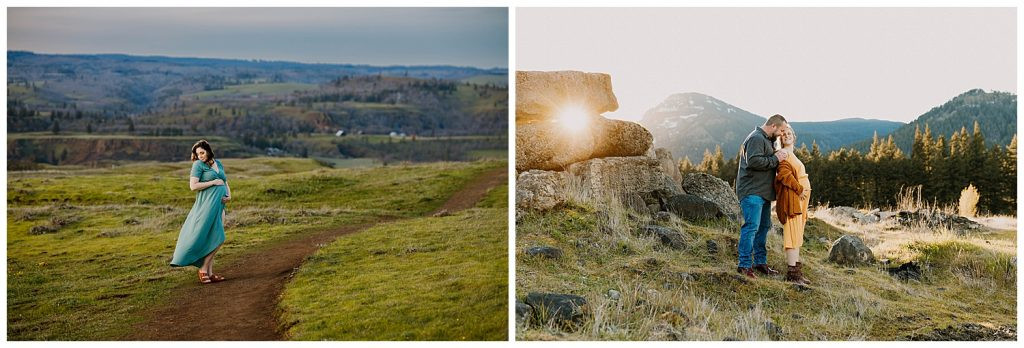Finding the right location is paramount to capturing stunning photographs, whether you’re shooting family portraits or romantic couples. The ideal spot serves as more than just a backdrop; it complements your subjects, enhances the mood, and elevates your overall image quality. But how do you discover these hidden gems? This guide dives into the essential elements photographers should consider when location scouting to ensure you find that picture-perfect setting.
1. Prioritize Publicly Accessible Land for Your Photoshoots
Your location scouting should always begin with practicality, and that means confirming land access. Google Maps is an invaluable tool for initial exploration. Start by browsing areas that visually appeal to you. Once you’ve identified a potential spot, the next crucial step is determining whether it’s public or private land. Accessibility is key to avoid legal issues and ensure a smooth photoshoot. In many regions, land ownership information is publicly available. Resources like mapping applications designed for outdoor enthusiasts can be incredibly helpful, often delineating public and private land boundaries clearly. Verifying land status is a fundamental step in responsible location scouting.
 Families enjoying golden hour at a scouted photo location
Families enjoying golden hour at a scouted photo location
2. Sunset and Sun Position: Lighting Considerations
For photographers aiming for that magical golden hour light, understanding the sun’s position is non-negotiable. If you frequently schedule sessions around sunset, your location scouting must factor in solar direction. Knowing the sun sets in the west provides a starting point. Look for locations that offer a combination of elements. Ideally, you want areas where the sun might dip behind trees to create depth and visual interest, but also with open eastern skies to capture the soft, reflected light after the sun dips below the horizon. Consider locations with unobstructed westward views to fully capitalize on the sunset itself. Google Maps’ terrain view is your ally here; it allows you to assess elevation changes. Higher elevations often mean prolonged sunlight exposure, as surrounding mountains or hills are less likely to prematurely block the sun.
3. Open Sky: Your Secret to Flattering Light
A common oversight in location scouting is neglecting to evaluate the amount of open sky available. Shooting in heavily wooded or enclosed areas, without sufficient open sky, can lead to less-than-desirable lighting conditions. The absence of open sky means a lack of reflected light onto your subjects. This often results in harsh, unflattering shadows, particularly around the eyes, and can make skin tones appear dull. To avoid these pitfalls, prioritize locations where your clients can be positioned facing a generous expanse of open sky. This open sky acts as a large, soft light source. When shooting with the sun as a backlight, open sky ensures your subjects are still beautifully illuminated from the front. Even on overcast days, positioning clients towards where the sun would be (if not obscured by clouds) will maximize available ambient light and create softer, more flattering results.
 Couple photographed at scenic location with mountain backdrop and soft lighting
Couple photographed at scenic location with mountain backdrop and soft lighting
4. Additional Tips for Effective Photo Location Scouting
Beyond these core considerations, several other strategies can refine your location scouting process:
-
Online Mapping Tools: Leverage online mapping services like Google Maps and even Apple Maps for initial location ideas. Broadly explore areas and virtually “drive around” to spot potential backdrops or interesting landscapes.
-
Dedicated Photography Location Apps: Explore specialized apps designed to discover photo locations. These apps often offer curated lists of spots, user reviews, and even examples of photos taken at those locations. They can unveil both popular landmarks and lesser-known hidden gems.
-
Local Knowledge is Gold: Don’t underestimate the power of local insight. Engage with residents, park rangers, or even local walking groups. They can often reveal secret spots or seasonal highlights, like wildflower blooms, that you wouldn’t find through online research alone.
-
Location Databases and Outdoor Platforms: Utilize online databases and platforms geared towards hikers, outdoor enthusiasts, and photographers. Websites and apps like trail directories or outdoor recreation guides can lead you to parks, trails, and scenic areas perfect for photoshoots.
-
The In-Person Visit is Essential: After narrowing down your choices, always conduct an in-person site visit. Pictures online can be deceiving. Visiting allows you to assess the location firsthand, check for any unexpected obstacles (fences, construction), evaluate the light at different times of day, and confirm if the location truly matches your vision.
5. Examples of Excellent Photo Location Types
Consider these location categories as starting points in your search for the perfect photoshoot setting:
-
Parks and Nature Preserves: Offering natural beauty, maintained landscapes, and often public accessibility, these are versatile options.
-
Historic Buildings and Landmarks: Provide unique architectural backdrops and a sense of place, adding character and visual interest to your images.
-
Rivers, Streams, and Lakeshores: Water features introduce dynamic elements, reflections, and serene atmospheres to your photography.
-
Beaches and Coastlines: Offering dramatic vistas, expansive skies, and the rhythmic beauty of waves, coastal locations are perennially popular.
-
Mountains and Hilltops: Provide breathtaking panoramic views and a sense of grandeur, perfect for epic and impactful photographs.
-
Forests and Woodlands: Offer intimate, natural settings with dappled light and a sense of enclosure, ideal for evocative and romantic imagery.
-
Gardens and Flower Farms: Bursting with color, texture, and fragrance, these locations are especially suited for vibrant and joyful photoshoots.
 Diverse examples of ideal photography locations including gardens, beaches, and forests
Diverse examples of ideal photography locations including gardens, beaches, and forests
By incorporating these location scouting strategies into your photography workflow, you’ll be well-equipped to discover exceptional settings that elevate your images and delight your clients.
